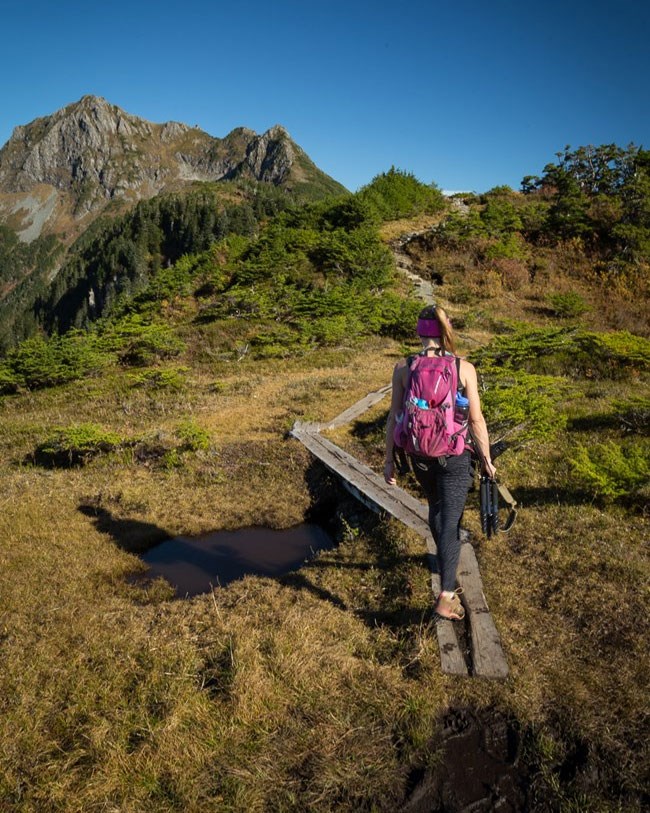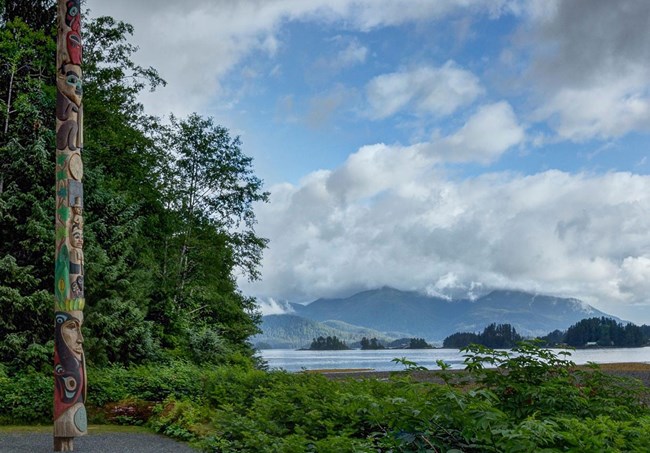Last updated: July 16, 2024
Article
NPS Geodiversity Atlas—Sitka National Historical Park, Alaska
Geodiversity refers to the full variety of natural geologic (rocks, minerals, sediments, fossils, landforms, and physical processes) and soil resources and processes that occur in the park. A product of the Geologic Resources Inventory, the NPS Geodiversity Atlas delivers information in support of education, Geoconservation, and integrated management of living (biotic) and non-living (abiotic) components of the ecosystem.

NPS photo by Weston Kessler
Introduction
Sitka National Historical Park (SITK) is located along the western shores of Baranof Island approximately 150 km (93 mi) southwest of Juneau in Sitka Borough, southeastern Alaska. Proclaimed a national monument on March 23, 1910, the park unit was re-designated as a national historical park on October 18, 1972. Encompassing approximately 47 hectares (116 acres), SITK preserves the site of the last major battle between invading Russian traders and the indigenous Tlingit tribe (Anderson 2017). On display along the scenic coastal trails at SITK are Tlingit and Haida totem poles. The Russian Bishop’s House, originally constructed in 1842, is a restored piece of Russian–American architecture that represents part of Russia’s little known colonial legacy in North America. Visitors to SITK can explore Tlingit culture and art, learn about the Russian colonial period in North America, or take a hike through temperate rainforest along the Totem Trail and Russian Memorial Loop.
Geologic Setting
The geology of the Sitka, Alaska area contains mountains, dormant volcanoes, and several faults that reflect one of the most tectonically active regions of North America. Numerous advances and retreats of Pleistocene glaciers have carved deep bays, steep valley walls, jagged coastlines, and sea cliffs, and left behind moraine deposits in the vicinity of SITK. The entirety of SITK geology consists of unconsolidated Quaternary-age deposits that contain glacial till, glacially deposited gravels, glacial erratics (rocks deposited by glaciers that differ from native rock types), and coastal marine deposits (Figure 21). Approximately half of the resources at SITK are coastal or marine, including about 1.6 km (1 mi) of shoreline that is constantly reworked by waves and tides.
- Scoping summaries are records of scoping meetings where NPS staff and local geologists determined the park’s geologic mapping plan and what content should be included in the report.
- Digital geologic maps include files for viewing in GIS software, a guide to using the data, and a document with ancillary map information. Newer products also include data viewable in Google Earth and online map services.
- Reports use the maps to discuss the park’s setting and significance, notable geologic features and processes, geologic resource management issues, and geologic history.
- Posters are a static view of the GIS data in PDF format. Newer posters include aerial imagery or shaded relief and other park information. They are also included with the reports.
- Projects list basic information about the program and all products available for a park.
Source: NPS DataStore Saved Search 3174. To search for additional information, visit the NPS DataStore.
A NPS Soil Resources Inventory project has been completed for Sitka National Historical Park and can be found on the NPS Data Store.
Source: NPS DataStore Saved Search 3125. To search for additional information, visit the NPS DataStore.
Related Articles
Sitka National Historical Park
National Park Service Geodiversity Atlas
The servicewide Geodiversity Atlas provides information on geoheritage and geodiversity resources and values within the National Park System. This information supports science-based geoconservation and interpretation in the NPS, as well as STEM education in schools, museums, and field camps. The NPS Geologic Resources Division and many parks work with National and International geoconservation communities to ensure that NPS abiotic resources are managed using the highest standards and best practices available.

